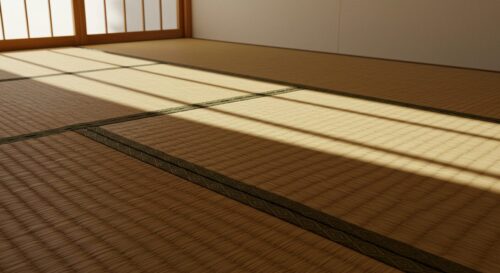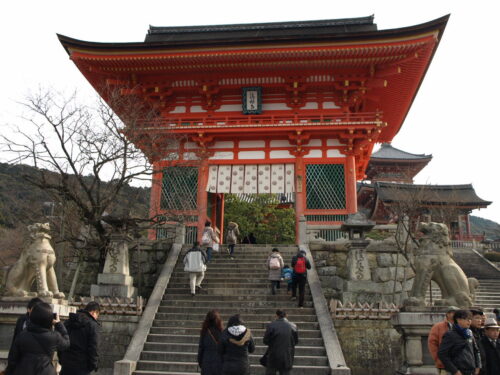Himeji Castle: Exploring Japan’s Iconic Architecture
2025年10月18日
Discover Himeji Castle, Japan’s finest castle and a UNESCO World Heritage Site. This article explores its rich history, unique design, and ingenious defense, offering a comprehensive understanding of its cultural significance and practical visitor information.
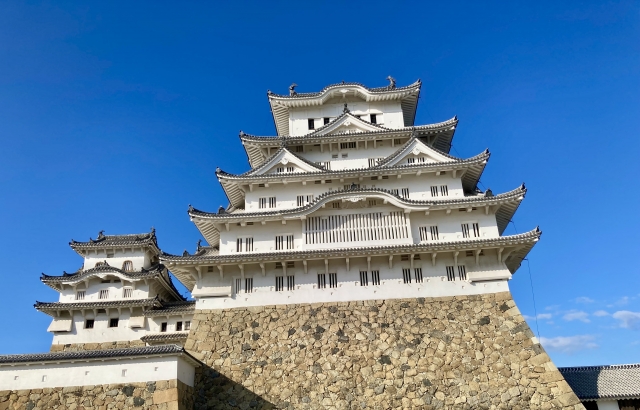
目次
Introduction to Himeji Castle
Himeji Castle (姫路城, Himeji-jō), widely celebrated as Japan’s most iconic and best-preserved feudal castle, is a magnificent architectural masterpiece nestled in Himeji City, Hyogo Prefecture. Often referred to as “White Heron Castle” (Shirasagi-jo or Hakuro-jo) due to its brilliant white plastered exterior and elegant, wing-like roofs, it evokes the graceful image of a bird in flight. This grand fortress stands as a paramount example of early 17th-century Japanese castle architecture, showcasing an unparalleled blend of defensive ingenuity and aesthetic beauty.
Designated as one of Japan’s first UNESCO World Heritage Sites on December 11, 1993, Himeji Castle holds immense global cultural and historical significance. It is not only a National Treasure of Japan but also a living emblem of the country’s rich samurai heritage and sophisticated building techniques. The sprawling complex, largely completed in its current form by 1609, encompasses a network of 83 buildings, including the towering main keep, intricate gates, corridors, and turrets, all meticulously constructed from wood and stone.
This introductory section sets the stage for a deeper exploration into the profound legacy of Himeji Castle. We will delve into its storied past, unveil the intricate details of its unique architectural brilliance, examine its ingenious defensive systems, and appreciate its role as a testament to Japan’s enduring cultural identity. Prepare to embark on a journey through centuries of history and craftsmanship that define this magnificent structure.
The Rich History of Himeji Castle
The story of Himeji Castle is a tapestry woven through nearly seven centuries of Japanese history, reflecting the nation’s tumultuous feudal era, periods of unification, and enduring commitment to preserving its cultural heritage. From its humble beginnings as a fort to its grand transformation into the iconic “White Heron Castle,” its history is marked by influential figures and strategic importance.
Origins and Early Construction
The earliest fortifications on Himeyama hill, where Himeji Castle now stands, date back to 1333. It was in this year that Akamatsu Norimura, a samurai and the governor of Harima Province during the Nanboku-chō period, established a fort to serve as a western defense point for the former capital city of Kyoto.
The site saw its first full-scale castle structure built in 1346 by Akamatsu Sadanori, Norimura’s son, who demolished the earlier fort and constructed Himeyama Castle in its place. Over the following centuries, the castle underwent various remodels and expansions by successive ruling clans. In 1545, Kuroda Shigetaka, a leader of the Kodera Clan, further remodeled the castle. By 1561, contemporary records from the Buddhist temple Shōmyōji mention a fortress at Himeji under the control of the Kuroda clan.
The Azuchi-Momoyama Period Transformation
A pivotal period in Himeji Castle’s development was the Azuchi-Momoyama period (1573–1603), a time of significant political unification following centuries of civil war. In 1580, the powerful warlord Toyotomi Hideyoshi, a key figure in Japan’s unification, took control of Himeji Castle. He recognized its strategic importance and initiated a major expansion, transforming it from a local fortress into a proper castle. In 1581, Hideyoshi added a three-story main keep (tenshu) and reinforced its defensive capabilities with improved stone walls and expanded moats.
The castle’s most significant transformation, however, occurred after the Battle of Sekigahara in 1600. Following his decisive victory, Tokugawa Ieyasu, the founder of the Tokugawa Shogunate, awarded Himeji Castle and the surrounding Harima Province to his son-in-law, Ikeda Terumasa, as a reward for his crucial support.
Between 1601 and 1609, Ikeda Terumasa undertook an ambitious, large-scale reconstruction project that largely created the magnificent castle complex seen today. This monumental undertaking involved an estimated 2.5 million man-days of labor, with resources and manpower gathered from across the country. The result was an expansive, sophisticated military complex featuring the iconic five-story (six-story from the exterior) main keep and a network of over 80 buildings, intricate defensive systems, and multiple moats.
Further additions were made between 1617 and 1618 by Honda Tadamasa, who inherited the castle. These included several buildings, notably the Keshō Yagura (Dressing Tower) for his daughter-in-law, Princess Sen.
Enduring Through Centuries
Remarkably, Himeji Castle has stood for nearly 700 years, remaining largely intact despite numerous historical challenges that saw many other Japanese castles destroyed. It was never attacked in battle, a testament to its formidable defensive design and the stable political environment of the Edo period (1603-1868) under the Tokugawa Shogunate.
During the Meiji era (1868–1912), a period when many feudal castles were dismantled or sold off, Himeji Castle was abandoned and even slated for demolition. However, it was ultimately spared, partly due to the efforts of army colonel Nakamura Shigeto and the high cost of demolition. It also miraculously survived the widespread bombing of Himeji city during World War II in 1945, with one firebomb landing on the main keep but failing to detonate. The Great Hanshin Earthquake in 1995 also left the castle largely undamaged.
Recognizing its unparalleled historical and architectural value, Himeji Castle was designated a National Treasure in 1931 and became one of Japan’s first UNESCO World Heritage Sites in December 1993, alongside the Buddhist Monuments in the Hōryū-ji Area. Extensive restoration efforts, including the “Shōwa Great Restoration” completed in 1964 and a major renovation between 2009 and 2015, have ensured its continued preservation for future generations.
Key historical figures and their contributions to Himeji Castle’s development:
| Year(s) | Figure | Contribution to Himeji Castle |
|---|---|---|
| 1333 | Akamatsu Norimura | Built a fort on Himeyama hill. |
| 1346 | Akamatsu Sadanori | Demolished the fort and built Himeyama Castle. |
| 1581 | Toyotomi Hideyoshi | Expanded the castle and added a three-story main keep. |
| 1601–1609 | Ikeda Terumasa | Completely rebuilt and significantly expanded the castle into its current grand form. |
| 1617–1618 | Honda Tadamasa | Added several buildings, including the Keshō Yagura. |
For more detailed historical context, you can explore resources such as the Himeji Castle Official Homepage and the World History Encyclopedia’s entry on Himeji Castle. Additionally, further information on the Azuchi-Momoyama period can be found on the Britannica website.
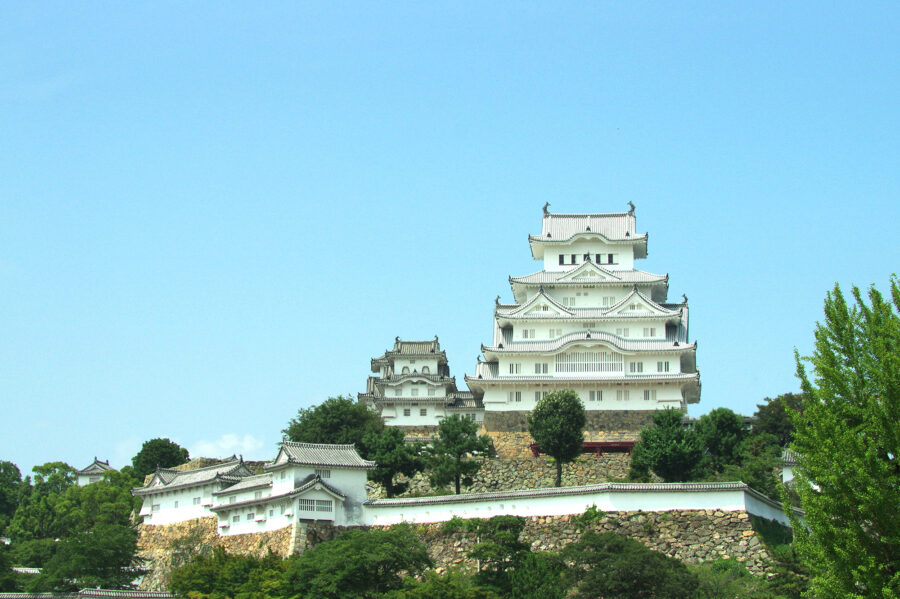
Unveiling Himeji Castle’s Architectural Brilliance
Himeji Castle stands as a paramount example of Japanese castle architecture, renowned for its sophisticated design that seamlessly blends formidable defensive capabilities with striking aesthetic beauty. This sprawling complex is a masterpiece of wooden construction, incorporating an intricate network of 83 interconnected buildings, including gates, corridors, storehouses, watchtowers, and keeps, all meticulously arranged to form a functional labyrinth.
The Grand Main Keep and Its Design
At the heart of Himeji Castle lies the magnificent main keep, or Dai-tenshu. This towering structure, though appearing to have five stories from the exterior, actually comprises six floors and an additional basement level, totaling seven stories. It is distinguished by its brilliant white plaster walls and an elaborate roof design that features a harmonious blend of massive hipped gables, gracefully curved karahafu (cusped gables), and mountain-shaped chidorihafu (plover gables).
The main keep is not a solitary structure but is connected to three smaller, three-tiered subsidiary keeps (Kotenshu)—the East, West, and Inui small towers—via two-level connecting corridors known as watariyagura. This interconnected system created a formidable defensive cluster. Internally, the keep is a marvel of traditional Japanese carpentry, built on a complex timber-frame structure of posts and beams. Two colossal central columns, running from the basement to the fifth floor, bear the heaviest load, showcasing an advanced understanding of structural engineering. This ingenious wooden construction allows the castle to flex with seismic movement, contributing to its remarkable resilience against earthquakes. Inside, steep stairs were strategically incorporated to impede the progress of any attackers who managed to breach the outer defenses.
Ingenious Defensive Structures
Himeji Castle’s architectural brilliance is perhaps most evident in its comprehensive and sophisticated defensive systems, designed to confuse, slow, and expose any invading force.
Stone Walls and Moats
Positioned on Himeyama Hill, Himeji Castle is a hirayama-jiro (flat hilltop castle) that expertly leverages its natural elevation for strategic advantage. The castle complex was originally protected by three concentric moats—inner, middle, and outer—with portions of the central and all of the inner moats still surviving today. These water-filled moats served as crucial initial lines of defense, designed to significantly delay and wear down attackers.
The castle’s stone walls are a defining feature, pioneered in 16th-century Japanese castle construction. These walls rise steeply and curve outward at their upper sections, a distinctive style known as ogi-no-kobai, or “folding-fan slope.” This elegant curve not only adds to the castle’s beauty but also makes the walls exceptionally difficult to scale and enhances their resistance to seismic activity. The construction methods for these stone walls evolved over time, evident in three distinct types found across the castle grounds: Nozura-zumi (piled-stone walls from the late 16th century, associated with Toyotomi Hideyoshi), Uchikomi-hagi (wedged-stone walls from the early 17th century, under Ikeda Terumasa), and Kirikomi-hagi (trimmed-stone walls, added by Honda Tadamasa). Some sections of these imposing walls reach heights of up to 26 meters (85 feet).
Maze-like Passages and Gates
The approach to Himeji Castle’s main keep is a masterclass in strategic disorientation, forming a complex labyrinth of passages, courtyards, and gates. Originally, the castle boasted 84 gates, with 21 remaining intact today. The paths are intentionally narrow, uneven, and riddled with sharp turns, blind alleys, and false gates. This design forces an advancing enemy to slow down, lose their bearings, and constantly expose themselves to defenders.
Each gate, such as the prominent Hishi-no-mon, Bizen-no-mon, and Ha-no-mon, was heavily fortified with wood and stone and designed to be small, restricting the movement of large attacking forces. They are strategically angled, often leading into enclosed courtyards known as masugata, which were essentially box-shaped traps where invaders would be confined and vulnerable to attacks from multiple directions.
Loopholes and Drop Stones
The castle walls and turrets are punctuated with numerous openings known as sama (loopholes), totaling approximately 1,000 across the complex. These come in various shapes—circles, triangles, squares, and rectangles—each designed for a specific purpose: to allow defenders to fire arrows (ya-zama) or guns (teppo-zama) at attackers without exposing themselves.
Adding another layer of close-quarters defense are the ishi-otoshi-mado, or “stone drop windows,” also referred to as stone-dropping holes. These angled chutes are strategically placed in the castle walls and watchtowers, protruding over the battlements. From these openings, defenders could hurl heavy stones or pour boiling oil onto attackers attempting to scale the walls directly below, making a direct assault incredibly perilous.
| Defensive Feature | Description | Strategic Purpose |
|---|---|---|
| Moats | Water-filled ditches surrounding the castle complex. | Slow down invaders, create initial defensive barriers. |
| Stone Walls (Ogi-no-kobai) | Steep, outwardly curving stone foundations. | Difficult to climb, resistant to earthquakes. |
| Maze-like Passages | Winding, narrow paths with sharp turns and dead ends. | Disorient and slow attackers, expose them to fire. |
| Fortified Gates | Small, heavily constructed gates often arranged in masugata enclosures. | Control access, restrict movement, create ambush points. |
| Loopholes (Sama) | Openings in walls (circular, triangular, square, rectangular). | Allow defenders to fire arrows or guns safely. |
| Stone Drop Windows (Ishi-otoshi-mado) | Angled chutes in walls and watchtowers. | Enable dropping stones or pouring liquids on attackers below. |
The Elegant White Heron Appearance
Himeji Castle is famously known as Shirasagi-jō or “White Heron Castle” (or “White Egret Castle”), a nickname inspired by its breathtakingly brilliant white exterior and its graceful, multi-tiered structure that evokes the image of a heron taking flight. This distinctive white facade is achieved through a specialized lime-based plaster, known as shirokabe, which covers not only the castle’s walls but also its eaves and the joints between roofing tiles.
Beyond its undeniable aesthetic appeal, the white plaster served several critical practical functions. Primarily, it provided exceptional fire resistance, a vital feature for wooden structures in an era frequently plagued by conflicts and the risk of arson. Additionally, the plaster acted as a protective barrier against the elements, sealing the wooden framework from wet rot, wind, rain, and snow, and helping to regulate humidity, which is well-suited to Japan’s varied climate. Symbolically, the brilliant white exterior also conveyed purity, elegance, and visually asserted the authority and power of the ruling shogunate. The extensive application of this plaster, covering both sides of the walls and even the roofing tile joints, contributes significantly to Himeji Castle’s uniquely pristine and radiant appearance.
Himeji Castle as a UNESCO World Heritage Site
Himeji Castle holds immense global significance, recognized for its exceptional preservation and architectural brilliance. On December 11, 1993, it was officially inscribed on the UNESCO World Heritage List, making it one of Japan’s inaugural cultural World Heritage Sites, alongside Horyuji Temple in Nara. This prestigious designation, under the official name “Himeji-jo,” acknowledges the castle’s Outstanding Universal Value to humanity.
The castle’s enduring presence is remarkable, having largely survived centuries of natural disasters, including the Great Hanshin earthquake of 1995, and even the bombing during World War II, a fate that many other Japanese castles did not escape. This resilience has allowed Himeji Castle to retain its original 17th-century form and features, distinguishing it as one of Japan’s precious twelve remaining original castles.
Outstanding Universal Value and UNESCO Criteria
Himeji Castle’s inscription was based on two crucial cultural criteria, highlighting its unparalleled qualities as a site of global importance:
| Criterion | Description |
|---|---|
| Criterion (i) | Himeji Castle is recognized as a masterpiece of construction in wood. Its design seamlessly blends an effective functional role with profound aesthetic appeal, evident in its iconic white-painted plaster and the subtle interplay between its building masses and multiple roof layers. |
| Criterion (iv) | The castle represents the pinnacle of Japanese castle architecture in wood, meticulously preserving all its significant features intact. It stands as the finest surviving example of early 17th-century Japanese castle architecture, showcasing highly developed defensive planning principles and ingenious protection devices from the nascent period of the Shogunate. |
Its “Outstanding Universal Value” stems from its status as the most exemplary and intact representation of early 17th-century Japanese castle architecture. The complex encompasses 83 buildings, each contributing to a sophisticated network of defensive systems and innovative protective measures. The elegant appearance, unified by the distinctive white plastered earthen walls, has earned it the popular moniker “White Heron Castle” (Shirasagi-jo or Hakuro-jō), reflecting its graceful silhouette resembling a bird in flight.
Beyond its international recognition, Himeji Castle also holds the esteemed titles of a National Treasure of Japan and a Special Historic Site, underscoring its profound cultural and historical significance within the country.
Exploring the Grounds and Gardens
The vast grounds of Himeji Castle offer visitors a journey through centuries of Japanese history and horticultural artistry. Comprising over eighty meticulously preserved buildings spread across multiple baileys (kuruwa), the complex is connected by a series of winding paths and fortified gates, each designed with both aesthetics and defense in mind.
The Expansive Castle Grounds and Baileys
Upon entering through the Otemon Gate, visitors first encounter the spacious, admission-free Third Bailey, known as Sannomaru. This area features a large, cherry tree-lined lawn, making it a particularly popular spot for enjoying cherry blossoms, typically in early April. The approach to the main keep from here is intentionally labyrinthine, guiding visitors along walled paths and through a succession of gates and baileys. This intricate design was strategically implemented to slow down and expose any attacking forces, showcasing the castle’s ingenious defensive planning.
The Serene Nishinomaru Garden
After exploring the main keep, visitors have the option to delve into the Nishinomaru (West Bailey), which once served as the private residence of a princess. This area provides a unique perspective of the main keep and features a long building with an enclosed corridor, known as the Hyakken Roka (Long Gallery), containing multiple unfurnished rooms that visitors can walk through. The Nishinomaru offers a tranquil experience, often with fewer crowds, allowing for a more serene appreciation of the castle’s architecture and the surrounding landscape.
Koko-en Garden: An Edo Period Masterpiece
Adjacent to Himeji Castle, to its southwest, lies Koko-en Garden, a stunning Edo-period style Japanese garden. Opened in 1992 to commemorate Himeji City’s 100th anniversary, it spans 3.5 hectares (8.5 acres) and is built on the former site of samurai residences. Koko-en is not a single garden but a collection of nine distinct strolling-style gardens, each with its own unique theme and landscaping.
These diverse gardens are connected by traditional mud walls (Tsuiji-bei) with tiled roofs and feature beautiful wooden gates, evoking an authentic Edo-period atmosphere. Visitors can find a “Tea Ceremony Garden” with a Sukiya-style tea house called Souju-an, where matcha tea service is available, and a restaurant named Kassui-ken, offering seasonal Japanese dishes with scenic garden views. Koko-en is celebrated for its ability to beautifully encapsulate Japan’s changing seasons and offers magnificent views of Himeji Castle as a dramatic backdrop.
Highlights of Koko-en Garden’s Nine Sections
| Garden Name | Key Features |
|---|---|
| The Garden of the Lord’s Residence | The largest garden, designed to evoke the grandeur of a daimyo’s estate. |
| Tea Ceremony Garden | Features the Sukiya-style tea house, Souju-an, offering a traditional tea experience. |
| Garden with a Hill and Pond | A classic Japanese garden style, often incorporating a central pond and miniature hills. |
| Garden of Pine Trees | Dedicated to the revered pine tree, symbolizing longevity and strength. |
| Garden of Bamboo | Showcases various species of bamboo, creating a serene and rustling soundscape. |
| Garden of Flowers | Designed to highlight seasonal blooms and vibrant colors throughout the year. |
The Castle Moats and Their Role
Himeji Castle was originally encircled by three moats, two of which have survived to this day. These moats, while aesthetically pleasing, served a crucial defensive purpose, forming an additional barrier against invaders. The inner moat, known as goku-bori, offers a unique experience: visitors can take boat rides along it on Saturdays, Sundays, and public holidays, providing a different perspective of the castle’s formidable walls.
Seasonal Highlights
The castle grounds are particularly enchanting during certain seasons. Over 1,000 cherry trees flourish within the complex, making Himeji Castle one of Japan’s most popular and picturesque cherry blossom viewing spots, especially in early April. Beyond the iconic sakura, the extensive castle park also boasts plum, peach, azalea, and wisteria, ensuring that the grounds offer natural beauty throughout much of the year. Special events, such as nighttime cherry blossom light-ups in spring and moon festival events in early fall, further enhance the magical atmosphere of the castle.
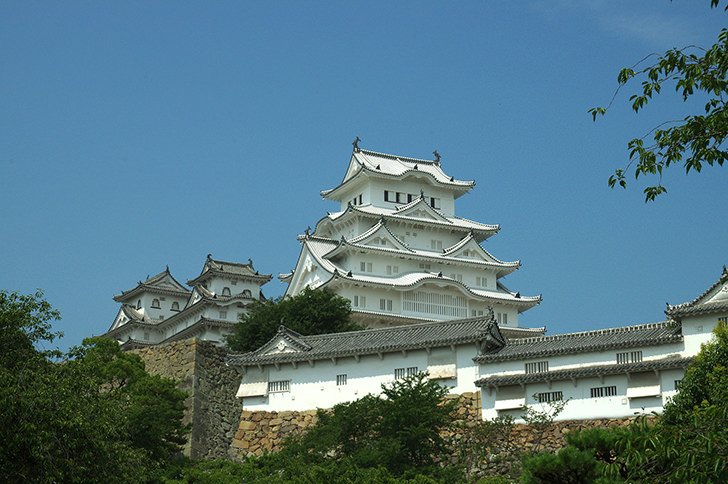
Visiting Himeji Castle: A Guide for Travelers
Himeji Castle, a UNESCO World Heritage site and National Treasure, stands as a testament to Japan’s rich architectural and historical legacy. Planning your visit ensures a smooth and memorable experience at this iconic “White Heron Castle.”
Location and Access
Himeji Castle is prominently located in Himeji City, Hyogo Prefecture, Japan. Its strategic position historically served as a western defense point for the former capital city of Kyoto.
Getting to Himeji City
Himeji City is well-connected by Japan’s efficient rail network, making it an ideal day trip destination from major cities like Tokyo, Osaka, and Kyoto. The primary gateway is JR Himeji Station.
- From Tokyo: The fastest way is via the Tokaido/Sanyo Shinkansen (bullet train). Direct Hikari trains take approximately 3.5 hours. Nozomi trains are slightly faster at around 3 hours but require a supplement fee if using a Japan Rail Pass. The one-way fare is around 16,000 yen.
- From Osaka (Shin-Osaka Station): Take the Tokaido/Sanyo Shinkansen (Hikari or Sakura trains) for a journey of about 30-40 minutes. Alternatively, the JR Special Rapid Service from JR Osaka Station takes approximately 1 hour and is a more economical option if you don’t have a Japan Rail Pass.
- From Kyoto (Kyoto Station): The JR Sanyo Shinkansen (Kodama, Sakura, or Hikari trains) offers a direct trip of around 40-55 minutes. The JR Special Rapid Service is a slower but cheaper alternative, taking about 90 minutes.
From Himeji Station to Himeji Castle
Upon arriving at JR Himeji Station, exit via the North Exit. Himeji Castle is visible in the distance, situated at the end of the broad Otemae-dori Street.
- Walking: The castle is an easy and pleasant 15-20 minute walk straight down Otemae-dori Street.
- Bus: For a quicker option, take a Shinki Bus from the North Exit of Himeji Station. Get off at the “Otemon-mae” bus stop, which is a 5-minute walk from the castle entrance. The bus ride takes approximately 3-5 minutes and costs around 190-210 yen.
- Taxi: A taxi ride from Himeji Station to the castle takes about 3-5 minutes and costs approximately 750-1,800 yen.
Best Time to Visit
Himeji Castle is captivating year-round, but certain seasons offer unique beauty and experiences.
- Spring (Late March to Early April): This is the most popular time to visit, as over 1,000 cherry trees on the castle grounds, particularly in Sannomaru Park, burst into bloom, creating a picturesque contrast with the castle’s white facade. Be prepared for larger crowds during this period and Golden Week (early May).
- Autumn (Mid-November): The castle grounds and the adjacent Kokoen Garden are adorned with vibrant autumn foliage, offering another stunning visual spectacle.
- Winter (January-February): For those who prefer fewer crowds, winter can be an excellent time to visit. The crisp air often provides clear views of the castle, and you might have more of the complex to yourself.
- Summer (June-August): While lush greenery surrounds the castle, Japan’s summer months can be hot and humid, requiring visitors to stay hydrated.
It is advisable to check the official Himeji Castle website for congestion forecasts, especially during peak seasons, as visitor numbers may be limited to 15,000 per day.
Ticketing and Opening Hours
Understanding the admission details will help you plan your visit effectively.
Opening Hours
Himeji Castle generally operates with consistent opening hours, though these may extend during certain seasons.
| Period | Opening Hours | Last Admission |
|---|---|---|
| Typically (September to May) | 9:00 AM – 5:00 PM | 4:00 PM |
| Summer Season (June to August) | 9:00 AM – 6:00 PM | 5:00 PM |
The castle is regularly closed on December 29th and 30th.
Admission Fees
Tickets can be purchased at the ticket booth near the Hishi Gate, which marks the entrance to the paid area of the castle.
| Ticket Type | Price (JPY) | Notes |
|---|---|---|
| Adult (Castle Only) | 1,000 | Ages 18 and over. |
| Child/Student (Castle Only) | 300 | Elementary to high school students (up to 18 years old). Preschool children are free. |
| Combined Ticket (Castle & Kokoen Garden) | 1,050 | Offers a slight discount for visiting the adjacent Kokoen Garden. |
Please note that as of March 2026, Himeji Castle is planning to increase its adult admission fee for non-Himeji residents to between 2,000 and 3,000 JPY, while visitors under 18 years old may receive free admission. E-tickets are available and can help skip potential lines at the ticket counter. Coin lockers are available for bag storage.
For more information about our projects and craftsmanship, please visit our official website:
🌐 Sato Construction (Shizenya)
Watch our latest video on YouTube and see how we bring traditional Japanese architecture to life:
▶️ Sato Construction YouTube Video
